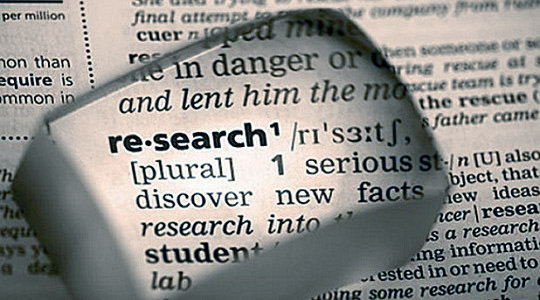
当前课程知识点:Western and Chinese Art: Masters and Classics > 10.Verve and Character: From Wang Wei to Ni Zan > 10.1Landscape painting from the Five Dynasties period to the Northern Song Dynasty > Landscape painting from the Five Dynasties period to the Northern Song Dynasty
返回《Western and Chinese Art: Masters and Classics》慕课在线视频课程列表
返回《Western and Chinese Art: Masters and Classics》慕课在线视频列表
我们在这里要进入到
五代北宋时期的山水画创作
在介绍中国山水画之前
我们先回顾一下老子的一段话
老子说 有物混成 先天地生
寂漠
独立不改
周行不殆 可以为天下母
吾不知其名
字之曰道
吾强为之名曰大
大曰逝
逝曰远
远曰返
道大 天大 地大 王大
域中有四大 而王处一
人法地
地法天
天法道
道法自然
老子这段话指出了
中国传统文化的基本世界观
按照这种世界观
世界是运动变化的
是无限发展的
但同时又是周而复始的
这就是道家所谓自然
下面我们就以对老子哲学
所表现的古代文化世界观为前提
来理解五代北宋时期的作品
我们现在来给大家介绍荆浩
荆浩的绘画在五代时期是对
中国山水画具有开拓意义的创作
同时他的绘画理论也是对
中国山水画理论的开拓性创作
荆浩关于绘画有两句话
是非常具有纲领意义的
一句话他说
画者画也
度物象而取其真
这句话就明确地指出绘画的
根本目的不只是要描绘物象
而是对物象的体验考察
从而得到对物象背后的
真的把握和表现
他又说 似者得其形
遗其气
真者气质俱盛
“形”我们大家都知道是事物的外观
他认为如果我们只是去追求相似性
也就只是去抓住事物的外观形象
那么就会遗失掉事物的“气”
“气”是事物的内在生命
他说“真”是什么呢
“真”是气质俱盛
这个“质”应该是事物的
具体可感的那一方面
而“气”呢是和这个具体
可感的东西相联系的
事物的内在生命、生气
荆浩认为真正的绘画
应该是表里统一
内外一致地去揭示一个
事物的真实存在
我们现在来看他的
一幅作品题名为《匡庐图》
看这幅作品我们可能有两点感受
一点就是画中的景物
是非常清晰明确地展现在我们眼前
我们仿佛直观了
荆浩所看到的北方山水
但是另一方面我们又会感受到
荆浩对这些山水的展现
并不是以客观写实的方式去描绘的
而是经过了他所说的
“度物象而取其真”的过程
就是说经过了他的
想象 提炼和重新的组织
所以这样的山水画的表现
他实际上是画家经过了
高度的艺术创造加工之后的结果
而不是机械自然的临摹
我们现在介绍
另一个与荆浩大致同时的画家
这是南方的董源
我们现在看到的是董源的《潇湘图》
我们把董源的《潇湘图》
和荆浩的《匡庐图》
相比较就会发现
南北画家的差异
如果说荆浩的《匡庐图》
代表着北方画派
他所表现的山水风貌更多的
是以北方高耸峻峭
而且岩石裸露的山形为特征的
如果说董源的《潇湘图》
是南方山水画的代表
那么他描绘的南方山水是以
温润逶迤细腻的地貌特征为代表的
我们现在来看北宋画家
范宽的《溪山行旅图》
这个作品它是北方山水的典型代表
它以高耸峻峭的山形为绘画的主体
现在我们看到的这一座山峰
宛然是迎面扑来一样高峭耸恃
我们如果把这张作品
看作一幅风景摄影照
我们就会发现这幅画的构图
是有问题的
因为它没有遵循摄影机的透视原理
就是近大远小
近的清晰 远的模糊
近的明亮 远的黯淡
我们来看这幅画
从山脚经过山中到山顶
我们会看到每一个层面
都是相当的清晰
而且也没有被透视缩小
为什么会出现这样一种
反透视的构图呢
这就是因为中国古代山水画家
他们使用的构图方法是多点透视
而不是焦点透视
比如说这一幅画
从前景中的山脚到中景的
山腰到远景的山顶
画家给我们设置了
三个透视点或者说三个透视层次
所以我们观看这个画面的时候
也是按照画家设置的透视点
自动地移动我们的
视线来进行观看的
这样呢
就产生一种且行且看 且看且行
实际上它就产生了我们
在本节开始介绍的
老子所说的世界的存在方式
就是老子所说的“大”
我们来看范宽的《溪山行旅图》
就是这样的
从近景到中景到远景这是一个离去
也就是所谓逝的过程
而且也是一个由近及远的过程
但是我们看到了山顶之后
我们并不会把我们的目光
停留于山顶还会回到山脚
因为山脚也是一个透视点
这就是 大曰逝
逝曰远
远之后还要怎么样呢
返
就是回归
实际上中国山水遵循的
就是这种周而复始的世界存在规律
我们现在给大家介绍
北宋画家郭熙的《早春图》
这幅图画画出了
一片岖崎盘旋高耸入云的山体
看这片山体特别是
沿着它逶迤迂岖的山境
我们是不是感到
我们也如画中的人一样
进入到了这座山中去做爬涉和游览
《早春图》表现的是
郭熙山水画的这样一种构图观念
郭熙说 世之笃论 谓山水有可行者
有可望者
有可游者
有可居者
画凡至此
皆入妙品
但可行可望 不如可居可游之为得
郭熙这段话指出 绘画可以
给观者造成四个不同层次的感受
就是所谓可行 可望 可居 可游
但郭熙认为如果一幅画
只止于可行可望
就不如达到可居可游之高尚
在郭熙看来可行可望表明观者
和画中景致是一种客观外在的关系
而可居可游却表明观者
和画中景物
具有一种现实介入的关系
这就是说在可居可游的画境当中
观者通过绘画的构图和相应的景致
可以感受到一种身临其境的经验
那么郭熙的这幅《早春图》
他的妙处就在于
他不仅让我们通过
画面看到一片风景
而且让我们在看到这片风景的时候
会有一种置身其中的感觉
这种感觉是郭熙在他的
匠心独运的构图当中为我们创造的
换句话说他在对画面的构图和
节奏的把握当中给我们设置了一种
让我们身临其境地去
游览嬉戏的感觉
-1.1Factual impairment between image and message
--Factual impairment between image and message
-1.2Relationship between Fact and Truth
--Relationship between Fact and Truth
-1.3The image revelry in the information age
--The image revelry in the information age
-1.4 Nature, animal and human body art
--Nature, animal and human body art
-1.5 Art: from concrete bodies to metaphorical constructions
--Art: from concrete bodies to metaphorical constructions
-1.6 On defining art
-1.7 Globalization and Consumerism
--Globalization and Consumerism
-1.8 Art and Anti-art
-1.9The value classics hold to the modern time
--The value classics hold to the modern time
-Homework1
-2.1 The occurrence of prehistoric art
--The occurrence of prehistoric art
-2.2 Mysterious cave mural paintings
--Mysterious cave mural paintings
-2.3 Symbolism of rock engravings
--Symbolism of rock engravings
-2.4 Expressive functions about prehistoric painting
--Expressive functions about prehistoric painting
-2.5 Aesthetic characters of prehistoric art
--Aesthetic characters of prehistoric art
-2.6 The tribal art of bodily operation
--The tribal art of bodily operation
-2.7 The construction to reach the heaven
--The construction to reach the heaven
-2.8 Immortal art in ancient Egyptian
-- Immortal art in ancient Egyptian
-Homework2
-3.1 The relationship between mythology and Greek culture
--The relationship between mythology and Greek culture
-3.2 The marks of the epics written by Homer
--The marks of the epics written by Homer
-3.3 Three greatest tragedy drammatists in Greece
--Three greatest tragedy drammatists in Greece
-3.4 The aesthetics woven into ancient Greek architecture
--The aesthetics woven into ancient Greek architecture
-3.5 The ancient Greek sculpture
-3.6 The Greek sculpture of the classic age
--The Greek sculpture of the classic age
-3.7 Works of Phidias
-3.8 The essence and verve of ancient Greek classical art
--The essence and verve of ancient Greek classical art
-Homework3
-4.1The beginning of Chinese painting and Calligraphy
--The beginning of Chinese painting and Calligraphy
-4.2 Majesty and divinity from bronze ware
--Majesty and divinity from bronze ware
-4.3 The Duke Mao Tripod and eternal characters
--The Duke Mao Tripod and eternal characters
-4.4The Philosophy of Chuang Tzu
--The Philosophy of Chuang Tzu
-4.5Qin Shi Huang’s Terracotta Warriors
--Qin Shi Huang’s Terracotta Warriors
-4.6The painting in the Han Dynasty
--The painting in the Han Dynasty
-4.7 The sculpture in the Han Dynasty
--The sculpture in the Han Dynasty
-Homework4
-5.1Master Chuang Tzu's impact on the Wei and Jin Dynasties
--Master Chuang Tzu's impact on the Wei and Jin Dynasties
-5.2Talking about Ji Kang
-5.3 The general spirit of the Wei and Jin Dynasties
--The general spirit of the Wei and Jin Dynasties
-5.4 Wang Xizhi and his unrivalled attainment in calligraphy
--Wang Xizhi and his unrivalled attainment in calligraphy
-5.5 A Preface to the Orchid Pavilion
-- A Preface to the Orchid Pavilion
-5.6 The penmanship of two famous calligraphers surnamed Wang
--The penmanship of two famous calligraphers surnamed Wang
-5.7Gu Kaizhi and his painting
-5.8 Great poet Tao Yuanming
-Homework5
-6.1The Chan School in the Tang dynasty
--The Chan School in the Tang dynasty
-6.2“Cursive King”: Zhang Xu
-6.3《Four Calligraphy Works of Ancient Poems》
--《Four Calligraphy Works of Ancient Poems》
-6.4Zhang Xu and Huai Su
-6.5Wu Daozi and his paintings
-6.6Wang Wei and Chinese landscape painting
--Wang Wei and Chinese landscape painting
-6.7The relation of painting and poetry
--The relation of painting and poetry
-Homework6
-7.1 The beginning of Renaissance: Giotto
--The beginning of Renaissance: Giotto
-7.2 Giotto’s naturalism
-7.3 The frescoes in the Arenal Chapel
--The frescoes in the Arenal Chapel
-7.4 The Renaissance artist in north Europe: Robert Campin
--The Renaissance artist in north Europe: Robert Campin
-7.5 The Ghent Altarpiece
-7.6 Jan Van Eyck’s secular paintings
-- Jan Van Eyck’s secular paintings
-Homework7
-8.1 The beauty of dawn during Renaissance
--The beauty of dawn during Renaissance
-8.2 The reproducer of nature: Da Vinci
--The reproducer of nature: Da Vinci
-8.3 The immortal work Mona Lisa
-8.4 The classicism of Raphael
-8.5 The Sistine Chapel ceiling
-8.6 The mythology and sculpture of Moses
--The mythology and sculpture of Moses
-8.7 Michelangelo's struggle between life and death
-- Michelangelo's struggle between life and death
-8.8 The perceptual Titian and Venice
--The perceptual Titian and Venice
-Homework8
-9.1Rubens and the Baroque Art
-9.2Poussin and his classical spirit
--Poussin and his classical spirit
-9.3Rembrandt and his aptitude of wielding light and shadow
--Rembrandt and his aptitude of wielding light and shadow
-9.4 Rembrandt in his self-portrait
--Rembrandt in his self-portrait
-9.5 Vermeer and his painting
-Homework9
-10.1Landscape painting from the Five Dynasties period to the Northern Song Dynasty
--Landscape painting from the Five Dynasties period to the Northern Song Dynasty
-10.2 Creating painting out of poetry by Emperor Huizong of Song
--Creating painting out of poetry by Emperor Huizong of Song
-10.3 Viewing the small through the large
--Viewing the small through the large
-10.4 Combining the tangible with the intangible
--Combining the tangible with the intangible
-10.5 The atmosphere of freedom, detachedness and ease of landscape painting
-- The atmosphere of freedom, detachedness and ease of landscape painting
-10.6 Dwelling in the Fuchun Mountains
--Dwelling in the Fuchun Mountains
-10.7 Friendliness in Ni Zan’s painting
--Friendliness in Ni Zan’s painting
-10.8 A pristine and boundless world in Ni Zan’s painting
--A pristine and boundless world in Ni Zan’s painting
-Homework10
-11.1The origin and expression of the madman culture
--The origin and expression of the madman culture
-11.2 The madman Li Zhi
-11.3 Xu Wei: from gifted scholar to mad man
--Xu Wei: from gifted scholar to mad man
-11.4 The aesthetic ideology of Xu Wei
--The aesthetic ideology of Xu Wei
-11.5 Xu Wei’s notions and theories on painting practise
--Xu Wei’s notions and theories on painting practise
-11.6 Miscellaneous Plants and Flowers
--Miscellaneous Plants and Flowers
-11.7 Drunkenness in Xu Wei's art
-Homework11
-12.1 Winckelmann
-12.2 Neoclassical master: David
-12.3 The Death of Marat
-12.4 The Intervention of the Sabine Women
--The Intervention of the Sabine Women
-12.5 The aestheticism works by Ingres
--The aestheticism works by Ingres
-12.6 The contrast between photography and paintings
--The contrast between photography and paintings
-12.7 Courbet and realism
-Homework12
-13.1 Rousseau and emotionalism
-13.2 Kant's view about the beautiful and the sublime
--Kant's view about the beautiful and the sublime
-13.3 Goethe, from Werther to Faust
--Goethe, from Werther to Faust
-13.4 Byron, romantic hero
-13.5 The painting laws of Romanticism
--The painting laws of Romanticism
-13.6 John Constable
-13.7 The world of Turner
-Homework13
-14.1 Western modernism and Rodin
-14.2 The Gates of Hell
-14.3 Painting conception of Manet
--Painting conception of Manet
-14.4 Impressionism of Monet
-14.5 Cezanne:the Father of the art of modernism
--Cezanne:the Father of the art of modernism
-14.6 Van Gogh:painting and life
-14.7 The art value of Van Gogh
-Homework14
-15.1 art modernism
-15.2 porcelain urinal of Marcel Duchamp
--porcelain urinal of Marcel Duchamp
-15.3 This is not a pipe
-15.4 The great innovation artist: Picasso
--The great innovation artist: Picasso
-15.5 the infinity of art
-15.6 the art after Andy Warhol
-Homework15
-Final exam

